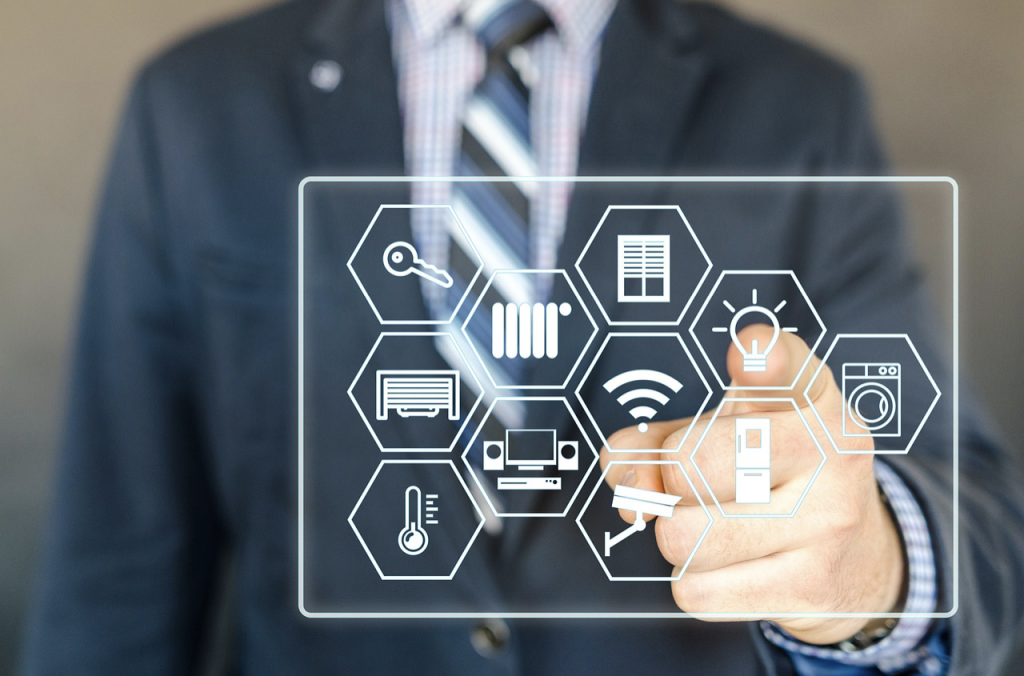In the not-so-distant past, the idea of turning on lights at home while sitting miles away at your office or having a tiny device play your favorite tunes with just a voice command seemed like something out of a science fiction movie. Yet, today, these conveniences are everyday realities.
Welcome to the era of smart homes, where convenience meets modern technology, transforming our lives in remarkable ways.
However, these fascinating advancements come at a cost, often underestimated and overlooked: the vulnerabilities of security and privacy. This new realm of interconnected devices, if not properly secured, can serve as open doors to cyber intruders, turning the dream of a smart home into a privacy nightmare.
Understanding Smart Homes and Connected Devices
A smart home, at its core, is a setup where appliances and devices can be automatically controlled remotely from any internet-connected place in the world using a mobile or other networked device.
Connected devices in a smart home include an array of gadgets and technologies designed to make life more convenient. A connected device refers to any gadget with the capability to link to the internet through Wi-Fi, providing the means for control or interaction via online platforms.
Such devices span a wide spectrum, from conventional computing tools like laptops and smartphones to objects of everyday use that have been imbued with smart capabilities. These may include thermometers that adapt to your preference, fridges that remind you when you’re out of milk, doorbells that show who’s at the door, and light systems that adapt to your mood or schedule. Smart washing machines that notify you when the laundry is done also fall into this category.
When combined, these connected devices form an ecosystem that is your smart home, each communicating and interacting with the other, creating an environment where tasks can be automated and controlled with remarkable precision.
Best Practices for Securing Smart Homes
With the threats present, it’s crucial to be proactive in protecting your home while enjoying smart technologies.
Use Identity Theft Protection Software
Identity theft protection software can help guard against unauthorized access to your personal information. This software monitors your personal information and alerts you if suspicious activity is detected. Check out https://www.homesecurityheroes.com/ for some of the best options. The website compares the top providers, making it easier for you to pick the right one.
Create Strong, Unique Passwords
Passwords are often your first-line defense against hacking. Whether it is email or phone passwords, make sure they are robust. Avoid common words or phrases and try to include a mix of letters, numbers, and special characters.
Implement Two-Factor Authentication
Two-factor authentication (2FA) levels up device security. With 2FA, even if someone guesses or steals your password, they still won’t be able to access your account without the second verification step, which could be a code you’ll receive on your email/phone or biometric data like a fingerprint.
Keep Your Devices Updated
Manufacturers often release updates to fix security vulnerabilities. Ensure your smart devices are set to update automatically or regularly check for and install updates to keep them secure.
Secure Your Wi-Fi Network
A secure Wi-Fi network is one of the must-haves for smart home security. Use a strong, unique password for your Wi-Fi, turn on network encryption, and consider setting up a guest network for visitors to protect your main network.
Disable Unused Features
Many smart devices come with a variety of features that may be enabled by default. If you don’t use certain features, especially those related to remote access, consider disabling them to minimize potential points of entry for hackers.
Vet Devices Before Purchase
Before buying a new smart device, do your homework. Research the manufacturer’s reputation for security and whether the device has had any known vulnerabilities or security incidents.
Regularly Check Device Settings
Default settings on devices are often designed for ease of use, not security. Regularly review security settings on each device. Modify and update when necessary. Doing so ensures they’re aligned with the best practices for privacy and data protection.
The Price of Ignoring Privacy
Ignoring privacy isn’t an option in our interconnected world. The consequences can be devastating, depending on the extent of the breach.
Personal Data Exposure
Smart devices, if not properly secured, can provide hackers with a treasure trove of personal data. Your personal habits, daily routines, financial information, and even conversations can be exposed. This data could be used for identity theft, blackmail, or other forms of cybercrime.
Financial Loss
A data breach might result in a financial loss. This can range from losing a few dollars to totally draining your bank account. Cybercriminals can initiate unauthorized transactions when they hack into your account.
Loss of Control over Home Systems
If your smart home systems are compromised, hackers could potentially control your devices. This could range from relatively harmless actions, like turning your lights on and off, to more serious invasions, like unlocking your doors or disabling your security system.
Damage to Reputation
In the event of a data breach, your personal details could be made public, potentially damaging your reputation. This is particularly problematic for individuals in sensitive occupations or high-profile positions.
Emotional Distress
Beyond the tangible impacts, ignoring privacy in a smart home context can cause considerable emotional distress. The feeling of being watched or the fear that your private life is exposed can lead to anxiety and a loss of the sense of personal security.
Conclusion

Photo by Gerd Altmann from Pixabay
While smart homes bring unprecedented convenience, they also introduce new security and privacy challenges. Ignoring these risks can have serious consequences, from data breaches to loss of control over your home systems.
However, by implementing robust security measures, regularly checking device settings, and staying informed about potential threats, you can enjoy the benefits of your smart home while ensuring your privacy and security remain intact. The key lies in striking the right balance between convenience and caution.

